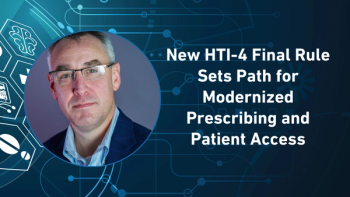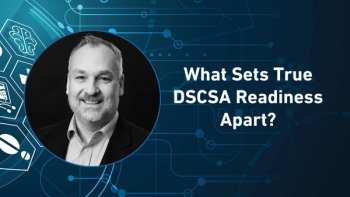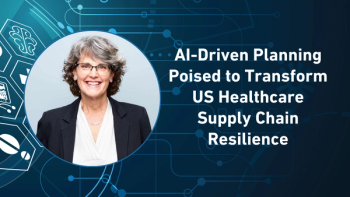
- Pharmaceutical Commerce - March 2021
- Volume 16
- Issue 1
Hybrid hubs and today's patient-centric push
Their promise is prompting pharma leaders to give their hub/PAP CRM platforms a closer look
Pharmaceutical executives are well aware of the disruptive potential of technology. Their organizations, once slow to innovate, are now rapidly adopting new use-cases for automation and artificial intelligence (AI) that expand empathetic touch points to better understand the issues and attitudes of their customers. Technology transformation, both in the context of delivery of reimbursement access solutions and customer engagement, is a core component to customer centricity. This realization is prompting leaders to give their hub/patient assistance program (PAP) customer relationship management (CRM) platforms—and their vendor partners—a closer look.
For many drug manufacturers, owning a hub/PAP CRM platform is part of a larger enterprise initiative, one that embodies all things patient centric, including R&D, wearables, mobile and real-world data collection. For others, it is more narrowly targeted to standard hub and PAP capabilities. Regardless of the scale or scope, motivations leading to full ownership generally fall under four categories:
- Owning all things customer experience.
- Controlling delivery processes across vendors.
- Standardizing data capture.
- Swapping under-performing vendors more seamlessly.
If you have ambitions of owning the hub/PAP CRM platform and in-sourcing customer engagement, you will do well to realize that remaining nimble to keep pace with emerging technologies and expanded use cases for automation and AI is not for the faint of heart.
When going it alone, leaders should be clear-eyed about the sizeable investments in talent, technology and time that will be required to deploy and sustain a wholly owned hub/PAP CRM platform.
People-powered transformation engines
Let us start with the most obvious investment—people. But not just any people. Transformative, tech-enabled customer engagement will require the mobilization of your most resourceful in-house talent.
Many pharma companies already have experienced staff (formally hired from hub/PAP vendors) overseeing current vendor delivery. To incrementally reimagine and advance solution design, your rock-star contributors should have a deep understanding of dimensional shifts in the channel, government policy, payer landscape and your competitors. Some advances may arrive via your technology vendor, but true transformative change will be more tailored, nuanced and specific.
To keep up, pharma companies need to move past practicing innovation theater (i.e., workshops and design-thinking classes) and shift their mindset to become generators of new ideas and new methods that focus on the issues. There is no “innovation process” per se, as both the problem and the solution are not yet known. Moving operations and engagement experiences forward calls for highly trained talent with sharp problem-solving skills, deep industry experience, insatiable curiosity and time-tested solutioning within this segment.
Whether your transformation is attributable to the integration of emerging technologies, or new capabilities, it will be colored by your investment in the best people.
Modular tech does not equal ‘meh’ tech
From more intuitive workflow processes to harmonization around data schema, there has been a sea change of advancement in technology platform design. Yet for all the progression, hub/PAP CRM platform capabilities have coalesced. Perhaps these platforms seem undifferentiated because they are underpinned by the same CRM application: Salesforce.
If the basic framework is the same, what does a quality hub/PAP CRM look like? In posing this question, you will do well to remember the adage, “appearances are deceiving” before jumping to conclusions that lead to skimpy technology investments.
At a high level, your hub/PAP CRM system architecture and design should be:
- Modular in design.
- Easily configurable.
- Supportive of a wide range of business rules.
- Accommodating to the latest in data and third-party payer capabilities.
In addition to AI and automation, your CRM platform should also demonstrate an active use of orchestration logic. Orchestration logic should be capable of triggering parallel processing while provisioning workflows and looping in agents. Reporting packages should be robust and workstreams should be segmented in a way to support visualization of operational performance and coverage dynamics at various stages of the workflow. Moreover, CRM software applications that underpin your hub/PAP platform should be market leading and, if possible, common to your organization’s CRM platform for sales.
As it is with people, technology to advance your hub program will require a significant investment of time and money if you are to realize value. A hub/PAP CRM platform that can use data sources from everything from electronic health records (EHRs), payer systems, identity-proofing and billing and claims records to genomics data and Fitbits® can provide plenty of scale to support the customer engagement strategies devised by your best talent.
Where is the future pointing?
Tomorrow’s hub/PAP CRM platforms will reenvision the patient journey with efficiency and precision. The micro-segmentation of tasks will produce outcomes that inform downstream workflows and trigger parallel tasks. Better sensors will be embedded within more micro segments to identify bottlenecks, making it possible to isolate issues with pinpoint accuracy, thus enabling quicker diagnostics. And layered within these micro segmented journeys are more robust guiding elements and dynamic business logic to orchestrate tasks more deeply and to guide the agent more fully.
Sensors will also serve a dual purpose of monitoring an agent’s time and motion to provide performance standards for each step in the process while also making it possible to measure the impacts of process changes in real time to increase productivity.
These early-warning buoys will help prevent the disruption and collateral damage that abandoned prescriptions can cause.
Arguably, the future state of hub/PAP CRM tech is not dissimilar to what some platforms have achieved today. The next generation of platforms emerging from the current nascent state will be far more intelligent and guided.
Full on in-source or shared delivery model?
Any proper hub/PAP CRM platform will require full interoperability with health information exchanges (HIEs), payers and EHR systems, to name a few. Pharma companies that elect to go it alone are likely opting out of many of these connections.
Given the limited data use rights and payer connections, pharma companies would be wise to consider contracting with hub vendors to perform payer sensitive front-end tasks of eligibility, coverage investigation and prior authorization.
The same can be said of PAPs, where eligibility determination may be a PAP vendor, in part to leverage payer connections and in part to maintain an arm’s length from the distribution of free goods.
Bridging applications or middleware will be required to enable live connections between the hub vendor and the pharma company’s hub CRM platform. These connections should exchange patient/task-specific progression, as well as overarching status indicators that, when triaged for follow-on work, will provide a stepwise access journey and next steps.
Keep in mind that this shared delivery strategy, by its very nature, will require that two operating systems function in parallel, as well as two distinct data warehouses being maintained by your hub vendor—one data warehouse containing contractually available patient data, and the other containing the restricted data to be used by the hub vendor to process the work and then destroy restricted data upon completion.
Whether you choose full-on insourcing or a shared delivery model, the speed of innovation will only accelerate. If you are evaluating the best path to move your hub/PAP CRM platform farther and faster toward tech transformation, then a hybrid approach is worth consideration.
The shared investment in talent, technology and time can reduce risk while helping your organization keep up with the pace of innovation.
About the author
Jim Banigan is Director of Patient Access Support HUB/PAP for Pharma and Life Sciences at Conduent, Inc. He can be reached at [email protected].
Articles in this issue
over 4 years ago
Today's hub blueprint: Lock in on the journeyover 4 years ago
All about the journeyover 4 years ago
Specialty access barriers: How technology can helpover 4 years ago
Keeping the message moving during Covidover 4 years ago
Rethinking NCPs in support mixover 4 years ago
Health policies high on specialty radar in 2021over 4 years ago
The legal landscape for patient support servicesover 4 years ago
Raising the stakes for market access supportNewsletter
Stay ahead in the life sciences industry with Pharmaceutical Commerce, the latest news, trends, and strategies in drug distribution, commercialization, and market access.





